LandscapesEdvard Munch and Trevor Shimizu
Press release
VI, VII is delighted to present Edvard Munch / Trevor Shimizu, an intimate presentation of landscape based paintings, woodcuts and lithographs. The theme of landscape is chosen due to the gallery’s proximity to the fjord and its view onto Ekeberg hill where Munch is known to have painted some of his better known works.
Visitors are invited to view a rare watercolor and graphic works by Munch in diffused and indirect daylight for up to two hours every day until June 8, marking the first time that audiences can experience Munch’s works in natural light in several decades.
This presentation is part of a larger project drawing Munch’s works into dialogue with the painting practice of Trevor Shimizu (b. 1978), a contemporary artist whose work is expressive, energetic and timely, in much the way Munch’s was.
In a practice spanning two decades, Shimuzu has produced video and painted works (sometimes combined), that in recent years have shifted away from portraiture towards landscape paintings that capture nature, freely painted from every day life.
After living in New York City for years, the artist now resides in a village on the Hudson river in upstate New York. The river and surrounding area are sources of inspiration to the artist who paints his impressions from memory. In Ocean and Birds (2019), loose brushstrokes capture light on the water obfuscating any reference to detail. In two darker works representing tidal pools, Reef 1 & 2 (2019) evoke the fertile, darker side of life by the sea, their broad strokes eerily suggestive of life beneath the water.
ARTIST BIOGRAPHY
Trevor Shimizu (b. 1978, California) lives and works in New York.
Solo exhibitions have taken place at La Mai- son de Rendez-Vous, Brussels; the Institute of Contemporary Art, Philadelphia; Kunsthal- le Lissabon, Portugal; 47 Canal, New York; Galerie Christine Mayer, Munich; The Green Gallery, Milwaukee; Misako & Rosen, Tokyo and Kunsthal Charlottenborg, Copenhagen. The artist has participated in group exhibitions at Stuart Shave Modern Art, London; White Columns, New York; the Whitney Biennial, New York; and the Queens Museum of Art, New York.
Shimizu’s work is in prestigious public collections including the Whitney Museum of American Art, New York; Detroit Institute of Arts, Detroit; K11 Art Foundation, Hong Kong; and High Museum of Art, Atlanta. This exhibition marks the artist’s first in Norway.
EXHIBITION TEXT
People and Landscapes
The earliest work in this exhibition is a small watercolor of the view from the Munch family’s apartment on Fossveien in Grünerløkka, a neighborhood in Kristiania (Oslo), probably made in 1879 or 1880. Edvard Munch was born on the 12th of December 1863, and was therefore no more than 16-17 years old when he created this watercolour.
Frequent illnesses throughout his childhood and youth meant that he spent a lot of time indoors, and schooling was sporadic. But he drew and painted diligently, and as this small watercolor shows, he was well on his way with his first serious works of art. In May of 1880, he painted his first pictures with oil paint on small cardboard plates and on the 8th of November — a little over a month before he turned seventeen — he self-consciously wrote in his diary: “I have now again left the technical school. My decision is now namely to become a painter.” And he certainly was!
From the mid-1890s he also began to create graphic works: first etchings, then lithographs and finally woodcuts. With this medium, he achieved both a certain income at a time when he had great difficulty in selling paintings, and a wider distribution of his most important motifs.
In many cases, both recognizable landscapes and models are included in symbolic themes, as we see, for example, in the woodcut Melancholy III from 1902. The motif was first designed as a painting in 1891, later repeated in many drawings, paintings and prints. The landscape is the well-known beach in Åsgårdstrand, which appears again in a large number of works by Munch. The model is Munch’s good friend, the art critic and writer Jappe Nilsen. The reason for the man’s depressed mood can be sensed in the small scene that takes place on the jetty far away, where three people are about to board a row boat. The man and the woman, and one carrying the oars suggest a possible underlying motive of jealousy, perhaps.
Munch’s art is perhaps best known for his strong and expressive images of illness and death, anxiety, and the complicated emotional life of love. But his artistry contains far more sober renderings of landscapes, portraits and people in more everyday situations. In Washing clothes at the shore the women are almost at one with the landscape. Both the women, and the rocky beach are carved with rough cuts in the woodblock, which in this impression has been inked in red and black.
Usually, even Munch’s expressive pictures are easy to “understand.” Emotions and situations are often general and rendered in a powerful and direct visual language. But sometimes, references to contemporary events are needed, as is the case for example, with the color lithograph Neutralia. The image of the naked women peacefully picking apples while a ship sinks out at sea was originally created in 1915 as a poster for an exhibition of Norwegian art in Copenhagen, one year after the outbreak of the First World War. Norway, like the other Scandinavian countries, was neutral during this war, but many people made good money, while the rest of Europe loomed like an enormous battlefield. Against this back- ground, Munch’s lithograph becomes a biting commentary on a war he almost viewed as a European civil war. As an artist, he received important impulses from French art at the beginning of his career, while Germany later became his most important market. And now these two countries faced each other in a bloody war. The lithograph was printed in large editions both with and without text.
While growing up in Grünerløkka Munch became accustomed to the sight of workers streaming to and from work at the factories in the immediate area, and later he included workers as subjects in many of his pictures. The first truly monumental work of this type was the painting Workers in Snow from 1910. The painting was sold to a German collector in 1912 (and later ended up in a Japanese collection), but before that Munch had probably carved the motif in a woodblock, drawn it on a lithographic stone and modeled it in clay. In addition, he painted a new version a few years later. This motif was the start of what in the 1920s developed into Munch’s attempt to realize a separate frieze dedicated to the life and work of the workers.
Munch’s renderings of workers most often show them outdoors, where they cultivate the soil, build roads and build houses. Women exceptionally help with harvesting and outdo- or laundry, as in the aforementioned woodcut, otherwise this is a distinctly masculine
reality. Strong and self-aware, they stand as the symbol of the working class that was now in the process of influencing society.
With the construction of his own studio building in 1919-20 at Ekely, Munch had workers close at hand for many new pictures. The painting Streetworkers also dates from this time, and it was immediately also executed as a lithograph.
At the end of the 1920s, many people wanted Munch to decorate the new building being planned for Oslo’s city hall. The newspapers were full of articles and petitions in support of such an idea, and Munch himself made many drafts for a larger decoration in which the construction of the town hall was a recurring motif. However, time passed without anything being decided, and when the competition for the decoration was announced, the aging Munch was not among the participants. But he made a large-format draft in which Workers in Snow is the central motif, flanked by a group of snow shovellers on the right and the Streetworkers on the left.
-Gerd Woll
Edvard Munch / Trevor Shimizu: Landscapes
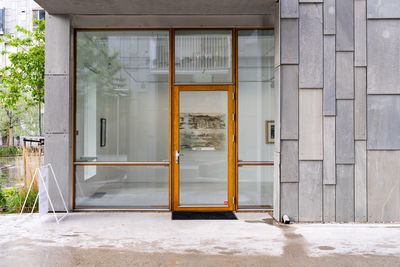
Edvard Munch / Trevor Shimizu: Landscapes
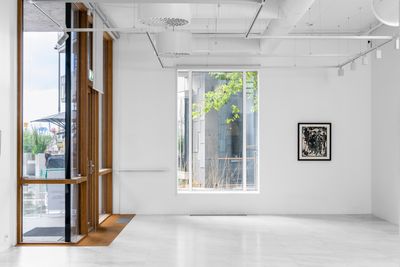
Edvard Munch / Trevor Shimizu
Landscapes
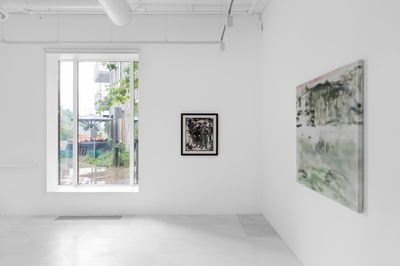
Edvard Munch, Arbeidere i snø / Workers in Snow, 1911
Tresnitt / Woodcut Sch. 350, Woll 289
6.00 × 4.97 cm (2 ⅜ × 2 inches)
Tresnitt / Woodcut Sch. 350, Woll 289
6.00 × 4.97 cm (2 ⅜ × 2 inches)


Edvard Munch / Trevor Shimizu
Landscapes
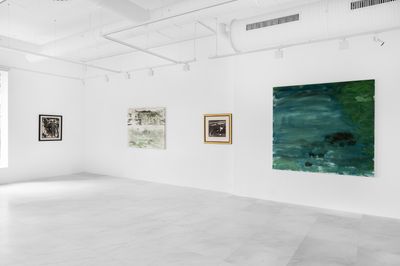
Trevor Shimizu, Cliff Above Beach, 2020
Oil on canvas
109.22 × 137.16 cm (43 × 54 inches)
Oil on canvas
109.22 × 137.16 cm (43 × 54 inches)
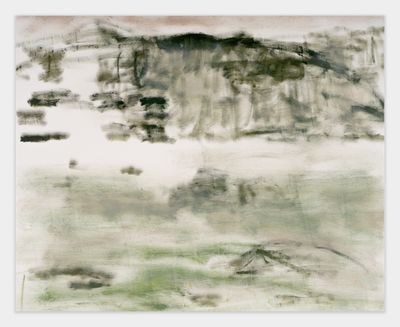

Edvard Munch / Trevor Shimizu: Landscapes
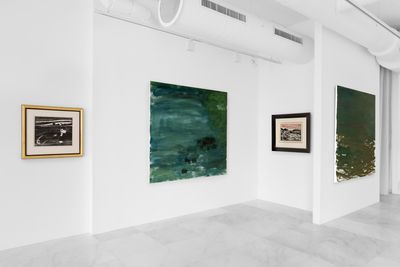
Edvard Munch, Melankoli III / Melancholy III, 1902
Tresnitt i svart og hvit / Woodcut in black and white Sch. 144, Woll 203
38 × 45 cm (15 × 17 ¾ inches)
Tresnitt i svart og hvit / Woodcut in black and white Sch. 144, Woll 203
38 × 45 cm (15 × 17 ¾ inches)


Trevor Shimizu, Turtles, 2019
Oil on canvas
162.56 × 172.72 cm (64 × 68 inches)
Oil on canvas
162.56 × 172.72 cm (64 × 68 inches)
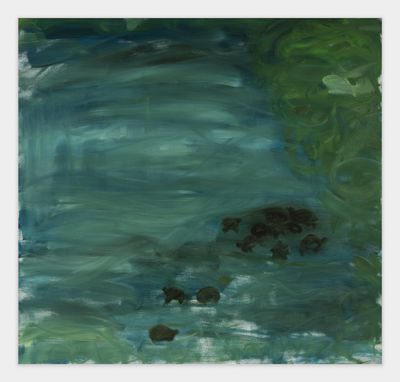

Edvard Munch / Trevor Shimizu: Landscapes
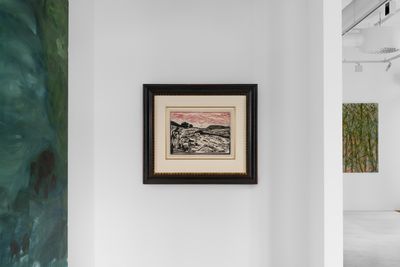
Edvard Munch, Klesvask ved vannkanten / Washing clothes at the shore, 1903
Tresnitt / Woodcut Sch. 210, Woll 246
331 × 463 × 5 mm (13 × 18 ¼ × ¼ inches)
Tresnitt / Woodcut Sch. 210, Woll 246
331 × 463 × 5 mm (13 × 18 ¼ × ¼ inches)
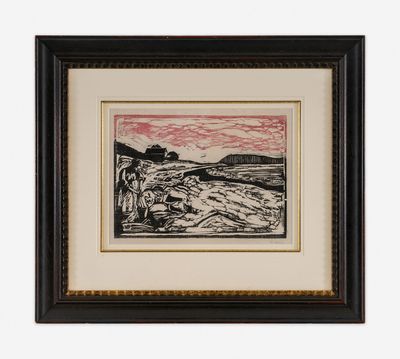

Edvard Munch / Trevor Shimizu: Landscapes
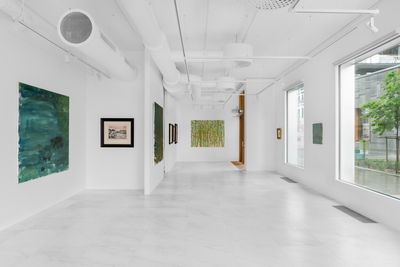
Trevor Shimizu, Ocean and Birds, 2019
Oil on canvas
162.56 × 172.72 cm (64 × 68 inches) (64 × 68 inches)
Oil on canvas
162.56 × 172.72 cm (64 × 68 inches) (64 × 68 inches)
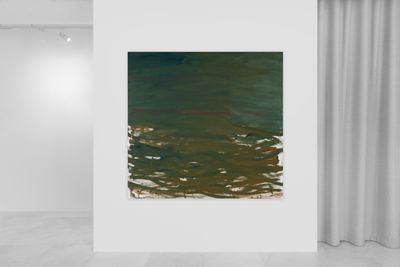

Trevor Shimizu, Ocean and Birds, 2019
Oil on canvas
162.56 × 172.72 cm (64 × 68 inches)
Oil on canvas
162.56 × 172.72 cm (64 × 68 inches)
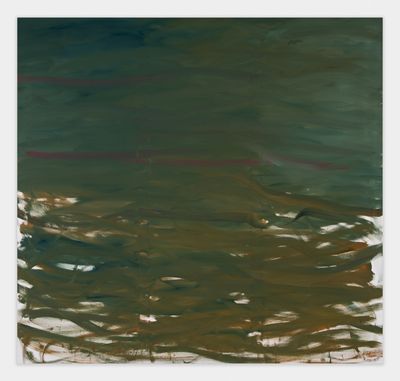

Edvard Munch / Trevor Shimizu: Landscapes
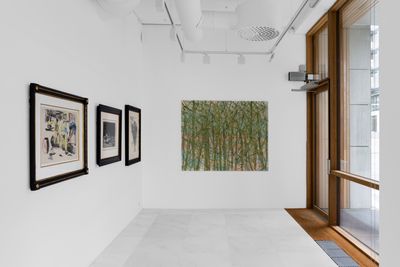
Edvard Munch / Trevor Shimizu
Landscapes

Edvard Munch, Gatearbeidere / Streetworkers, 1920
Håndfarget litografi / Hand-colored lithograph Sch. 484, Woll 565
44 × 60 cm (17 ⅜ × 23 ⅝ inches)
Håndfarget litografi / Hand-colored lithograph Sch. 484, Woll 565
44 × 60 cm (17 ⅜ × 23 ⅝ inches)


Edvard Munch, Snølandskap / Winter Landscape, 1898
Tresnitt / Woodcut Sch. 118. Woll 134
320 × 458 cm (126 × 180 ⅜ inches)
Tresnitt / Woodcut Sch. 118. Woll 134
320 × 458 cm (126 × 180 ⅜ inches)


Edvard Munch, Arbeidere i snø / Workers in Snow, 1912-1913
Litografi / Lithograph Sch. 385, Woll 414
65 × 49 cm (25 ⅝ × 19 ¼ inches)
Litografi / Lithograph Sch. 385, Woll 414
65 × 49 cm (25 ⅝ × 19 ¼ inches)
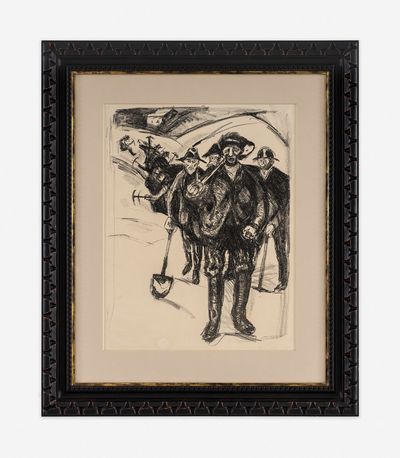

Trevor Shimizu, February 2023 (sunrise), 2023
Oil on Canvas
54 × 67 inches (137.16 × 170.18 cm)
Oil on Canvas
54 × 67 inches (137.16 × 170.18 cm)
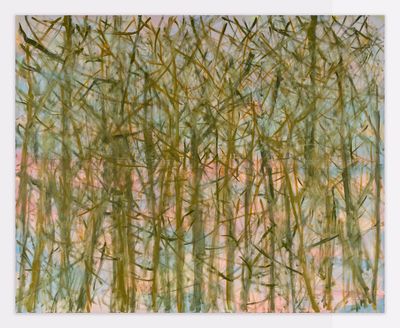

Edvard Munch / Trevor Shimizu
Landscapes
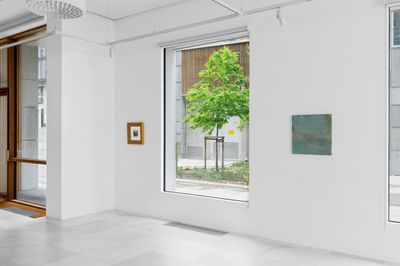
Edvard Munch / Trevor Shimizu: Landscapes
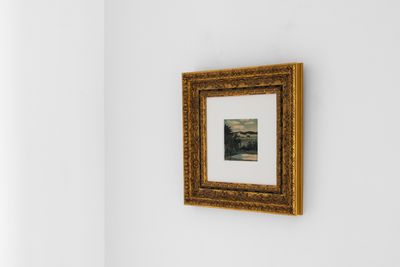
Edvard Munch, Fra Grüners hage / Scene from Grüners Garden, 1879–1880
Akvarell og blyant på vellum / Watercolor and pencil on vellum
122 × 128 mm (4 ¾ × 5 inches)
Akvarell og blyant på vellum / Watercolor and pencil on vellum
122 × 128 mm (4 ¾ × 5 inches)
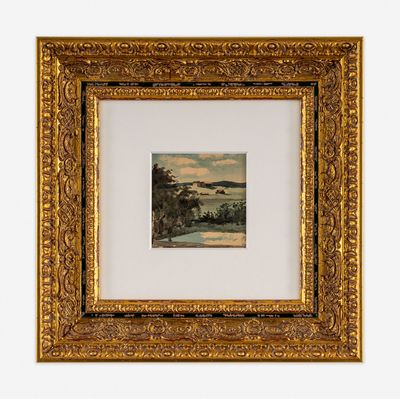

Edvard Munch / Trevor Shimizu: Landscapes
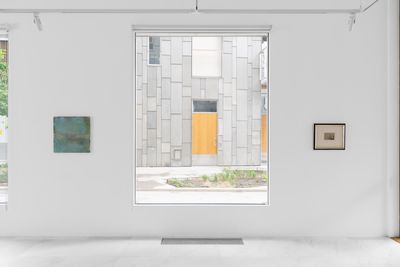
Trevor Shimizu, Cloud and Water (3), 2020
Oil on Canvas
58.42 × 58.42 cm (23 × 23 inches)
Oil on Canvas
58.42 × 58.42 cm (23 × 23 inches)


Edvard Munch / Trevor Shimizu: Landscapes
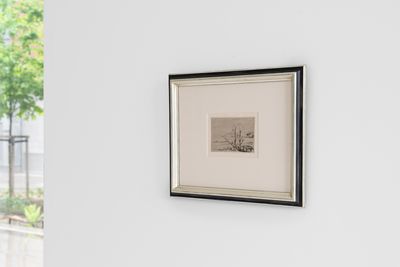
Edvard Munch, Norsk landskap / Norwegian Landscape, 1908
Kaldnål / Drypoint Sch. 266, Woll 298
10.5 × 15.4 cm (4 ⅛ × 6 ⅛ inches)
Kaldnål / Drypoint Sch. 266, Woll 298
10.5 × 15.4 cm (4 ⅛ × 6 ⅛ inches)


Edvard Munch, Nøytralien / Neutralia, 1915
Litografi trykt i fem farger / Lithograph printed in five colors Sch. 459, Woll 527
54 × 50 cm (21 ¼ × 19 ⅝ inches)
Litografi trykt i fem farger / Lithograph printed in five colors Sch. 459, Woll 527
54 × 50 cm (21 ¼ × 19 ⅝ inches)
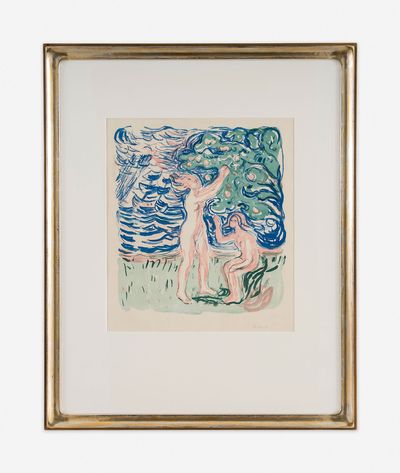

Edvard Munch / Trevor Shimizu: Landscapes
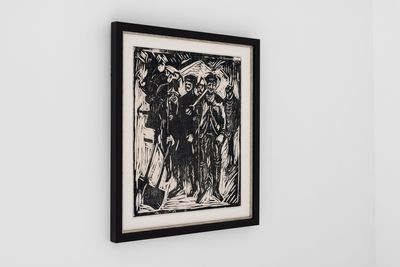
Edvard Munch / Trevor Shimizu: Landscapes
